Archive for the 'Enterprise' Category
-
March 23, 2023
您的 5G 网络有多安全?
By Bill Hagerstrand, Security Solutions BU, Marvell
New Challenges and Solutions in an Open, Disaggregated Cloud-Native World
Time to grab a cup of coffee, as I describe how the transition towards open, disaggregated, and virtualized networks – also known as cloud-native 5G – has created new challenges in an already-heightened 4G-5G security environment.
5G networks move, process and store an ever-increasing amount of sensitive data as a result of faster connection speeds, mission-critical nature of new enterprise, industrial and edge computing/AI applications, and the proliferation of 5G-connected IoT devices and data centers. At the same time, evolving architectures are creating new security threat vectors. The opening of the 5G network edge is driven by O-RAN standards, which disaggregates the radio units (RU), front-haul, mid-haul, and distributed units (DU). Virtualization of the 5G network further disaggregates hardware and software and introduces commodity servers with open-source software running in virtual machines (VM’s) or containers from the DU to the core network.
As a result, these factors have necessitated improvements in 5G security standards that include additional protocols and new security features. But these measures alone, are not enough to secure the 5G network in the cloud-native and quantum computing era. This blog details the growing need for cloud-optimized HSMs (Hardware Security Modules) and their many critical 5G use cases from the device to the core network.
-
February 14, 2023
下一代数据中心网络化需要做的三件事
By Amit Sanyal, Senior Director, Product Marketing, Marvell
Data centers are arguably the most important buildings in the world. Virtually everything we do—from ordinary business transactions to keeping in touch with relatives and friends—is accomplished, or at least assisted, by racks of equipment in large, low-slung facilities.
And whether they know it or not, your family and friends are causing data center operators to spend more money. But it’s for a good cause: it allows your family and friends (and you) to continue their voracious consumption, purchasing and sharing of every kind of content—via the cloud.
Of course, it’s not only the personal habits of your family and friends that are causing operators to spend. The enterprise is equally responsible. They’re collecting data like never before, storing it in data lakes and applying analytics and machine learning tools—both to improve user experience, via recommendations, for example, and to process and analyze that data for economic gain. This is on top of the relentless, expanding adoption of cloud services.
-
January 18, 2023
在工业网络中使用时敏网络实现网络可见性
By Zvi Shmilovici Leib, Distinguished Engineer, Marvell
Industry 4.0 is redefining how industrial networks behave and how they are operated. Industrial networks are mission-critical by nature and have always required timely delivery and deterministic behavior. With Industry 4.0, these networks are becoming artificial intelligence-based, automated and self-healing, as well. As part of this evolution, industrial networks are experiencing the convergence of two previously independent networks: information technology (IT) and operational technology (OT). Time Sensitive Networking (TSN) is facilitating this convergence by enabling the use of Ethernet standards-based deterministic latency to address the needs of both the IT and OT realms.
However, the transition to TSN brings new challenges and requires fresh solutions for industrial network visibility. In this blog, we will focus on the ways in which visibility tools are evolving to address the needs of both IT managers and those who operate the new time-sensitive networks.
Why do we need visibility tools in industrial networks?
Networks are at the heart of the industry 4.0 revolution, ensuring nonstop industrial automation operation. These industrial networks operate 24/7, frequently in remote locations with minimal human presence. The primary users of the industrial network are not humans but, rather, machines that cannot “open tickets.” And, of course, these machines are even more diverse than their human analogs. Each application and each type of machine can be considered a unique user, with different needs and different network “expectations.”
-
November 08, 2022
TSN 和 Prestera DX1500: 跨越 IT/OT 鸿沟的桥梁
By Reza Eltejaein, Director, Product Marketing, Marvell
Manufacturers, power utilities and other industrial companies stand to gain the most in digital transformation. Manufacturing and construction industries account for 37 percent of total energy used globally*, for instance, more than any other sector. By fine-tuning operations with AI, some manufacturers can reduce carbon emission by up to 20 percent and save millions of dollars in the process.
Industry, however, remains relatively un-digitized and gaps often exist between operational technology – the robots, furnaces and other equipment on factory floors—and the servers and storage systems that make up a company’s IT footprint. Without that linkage, organizations can’t take advantage of Industrial Internet of Things (IIoT) technologies, also referred to as Industry 4.0. Of the 232.6 million pieces of fixed industrial equipment installed in 2020, only 10 percent were IIoT-enabled.
Why the gap? IT often hasn’t been good enough. Plants operate on exacting specifications. Engineers and plant managers need a “live” picture of operations with continual updates on temperature, pressure, power consumption and other variables from hundreds, if not thousands, of devices. Dropped, corrupted or mis-transmitted data can lead to unanticipated downtime—a $50 billion year problem—as well as injuries, blackouts, and even explosions.
To date, getting around these problems has required industrial applications to build around proprietary standards and/or complex component sets. These systems work—and work well—but they are largely cut off from the digital transformation unfolding outside the factory walls.
The new Prestera® DX1500 switch family is aimed squarely at bridging this divide, with Marvell extending its modern borderless enterprise offering into industrial applications. Based on the IEEE 802.1AS-2020 standard for Time-Sensitive Networking (TSN), Prestera DX1500 combines the performance requirements of industry with the economies of scale and pace of innovation of standards-based Ethernet technology. Additionally, we integrated the CPU and the switch—and in some models the PHY—into a single chip to dramatically reduce power, board space and design complexity.
Done right, TSN will lower the CapEx and OpEx for industrial technology, open the door to integrating Industry 4.0 practices and simplify the process of bringing new equipment to market. -
October 05, 2022
设计节能芯片
By Rebecca O'Neill, Global Head of ESG, Marvell
Today is Energy Efficiency Day. Energy, specifically the electricity consumption required to power our chips, is something that is top of mind here at Marvell. Our goal is to reduce power consumption of products with each generation for set capabilities.
Our products play an essential role in powering data infrastructure spanning cloud and enterprise data centers, 5G carrier infrastructure, automotive vehicles, and industrial and enterprise networking. When we design our products, we focus on innovative features that deliver new capabilities while also improving performance, capacity and security to ultimately improve energy efficiency during product use.
These innovations help make the world’s data infrastructure more efficient and, by extension, reduce our collective impact on climate change. The use of our products by our customers contributes to Marvell’s Scope 3 greenhouse gas emissions, which is our biggest category of emissions.
-
August 31, 2020
By Raghib Hussain, President, Products and Technologies
-
July 28, 2020
实现网络处理边缘化: 安全
By Alik Fishman, Director of Product Management, Marvell

我们在先前的“实现网络处理边缘化”系列中探讨了将智能、性能和遥测向网络边缘推进的相关趋势。 本部分将介绍网络安全的角色转变,以及将安全功能整合至网络接入的方法。这些方法可以在整个基础设施内有效推动策略实施、保护和修复的简化。
随着移动设备和物联网设备等新数据源在工作场所的快速普及,遭黑客攻击和遭泄露的数据数量也迅猛增长。不少企业深受其害,网络安全威胁成为困扰他们的日常难题。 安全漏洞也呈现新的发展趋势,不但数量持续上升,严重性和持续时间也在增长,从入侵到控制的平均生命周期长达近一年,1给运营带来巨大的成本压力。 而数字化转型和新兴技术格局(远程访问、云原生模型、物联网设备激增等)的出现,使网络架构和运营受到巨大影响,也催生出新的安全风险。 大刀阔斧地变革企业基础设施,提升网络智能、性能、可视性和安全性2,已经刻不容缓。
-
July 23, 2020
遥测: 您的边缘可见性如何?
作者:软件工程高级总监 Suresh Ravindran
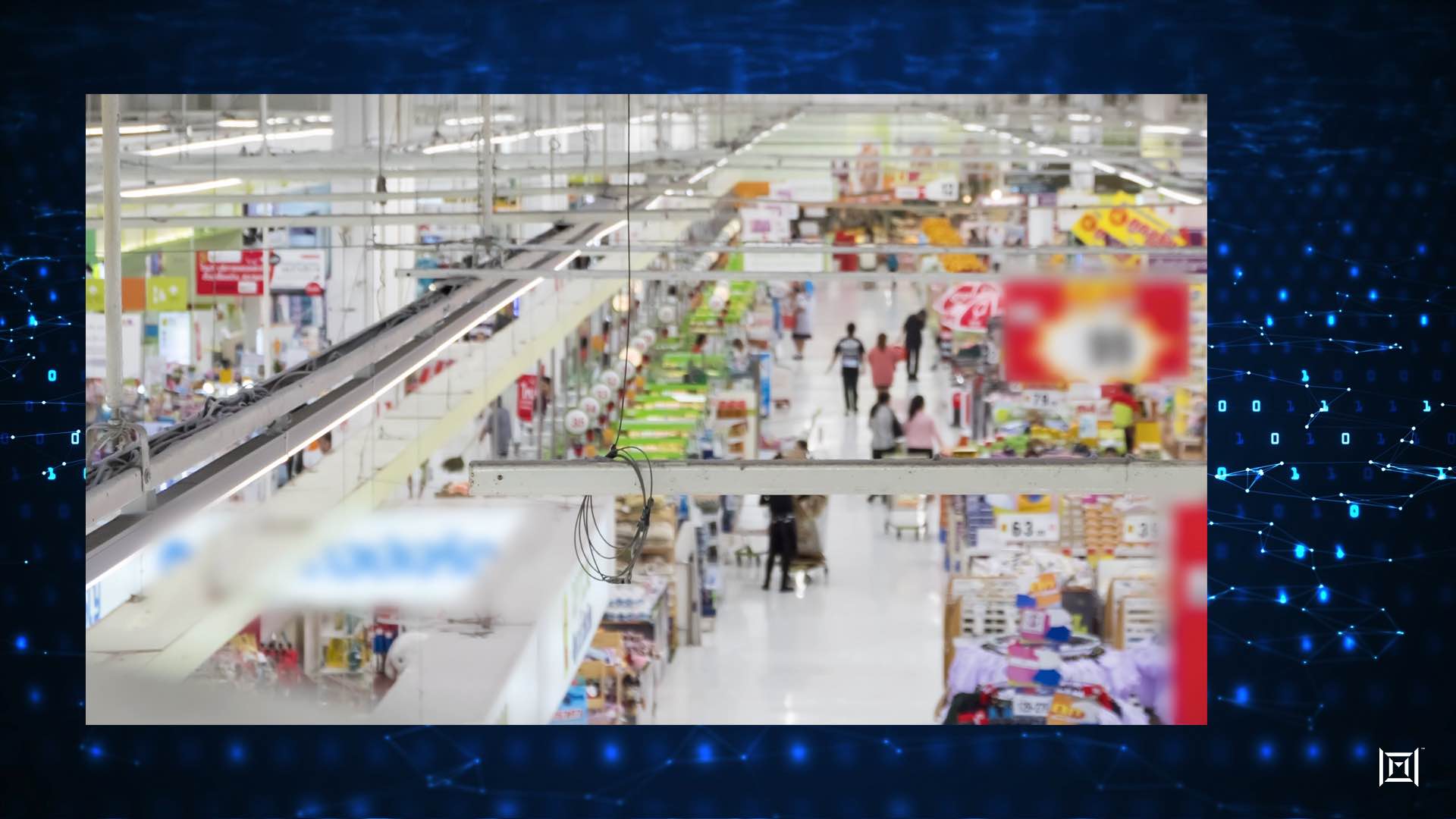
我们在先前的“利用网络边缘计算”系列中探讨了将智能和性能向网络边缘推进的相关趋势。 这篇博客将谈谈对于网络可见性的需求。
随着自动化趋势不断演进,互联设备数量呈现 爆炸式增长。 据 IDC 估计,到 2025 年将有 416 亿台设备 连接至物联网 (loT),生成多达 79.4 泽字节的海量数据1。 视频流和 传感器流量在这类流量中将占到相当大的比例, 需针对混合云模式中的个性化用户服务、 库存管理、入侵防护和负载平衡等应用进行 智能处理。 联网设备将需要具备智能管理 资源处理的能力,才能高效地处理 海量数据流。
-
July 16, 2020
对边缘速度的需求
作者:Marvell 公司资深架构师 George Hervey

在之前的实现网络处理边缘化的相关提示中,我们了解到推动网络智能边缘化发展的趋势。 通过 5G 等崭新无线网络技术 所赋予的容量, 这种基础设施将有力推动创新型应用的开发。 此类应用 大多采用高频活动模型,例如视频或传感器, 其中的活动通常由设备自行发起,从而产生大量 跨网络基础设施传输的数据。 思科的 VNI 预测要闻预计, 2017 到 2022 年,全球移动数据流量将增长 6 倍,或相当于 42% 的年增长速度1,网络性能升级成为需求趋势。
-
July 08, 2020
推动网络智能和相关处理边缘化发展
作者:Marvell 公司资深架构师 George Hervey

随着我们迈向“永远在线,始终连接”(Always On,Always Connected)模式的更高阶段,手机已然成为我们生活中的核心部分。 手机为我们提供对数据和通信媒介的即时访问,这种方式的访问影响着我们的决定,并最终影响我们的行为。
据思科预计,到 2022 年,全球移动网络将支持超过 120 亿台移动设备和物联网 (loT) 连接。1 这些移动设备将支持多种功能。 手机已经取代了各种小工具,为我们提供多种服务。 如果手机可以提供 Apple Pay、Google Pay 或电子支付功能,即没有必要随身携带钱包。 如果手机可以解锁并启动汽车或打开车库门,即没有必要随身携带车钥匙。 现在,应用程序还包括实时流媒体服务,这些服务可支持 VR/AR 体验和实时共享。 未来的移动服务和应用程序似乎充满各种可能,它们依然需要下一代数据基础架构来支持和促进其发展。 -
June 07, 2018
通用的新款以太网交换机同时满足多个行业领域的需求
作者:Ran Gu,Marvell 公司交换机产品线市场总监
由于持续的技术发展和潜在的市场需求,具有 10G 上行链路的千兆以太网 (GbE) 技术已经开始大量延伸到有高带宽需求的面向不同应用的网络基础设施,这些应用包括: SMB 交换机、工业交换、SOHO 路由器、企业网关和通用客户终端设备 (uCPE) 等。 全新的 Marvell® Link Street™ 88E6393X 具有丰富的功能特性、高扩展性、高性价比等特性,为用户提供一种非常具有吸引力的、适用多个行业的交换机 IC 解决方案。
88E6393X 交换机 IC 集成了 1000BASE-T PHY 和 10 Gbps 光纤端口功能,同时功耗只是竞争对手方案的 60%。 尽管采用了紧凑型封装,这款新型交换机IC能够提供 8 个三速 (10/100/1000) 以太网端口以及 3 个 10G XFI/SFI 端口,并且内置 200 MHz 微处理器。 Its SFI support means that the switch can connect to a fiber module without the need to include an external PHY - thereby saving space and bill-of-materials (BoM) costs, as well as simplifying the design. 88E6393X 支持 IEEE 802.1BR 端口扩展功能,可以在降低管理开销和控制运营支出 (OPEX) 方面发挥重要作用。 另外,它还包含用于 IP 转发目的的 L3 路由支持。
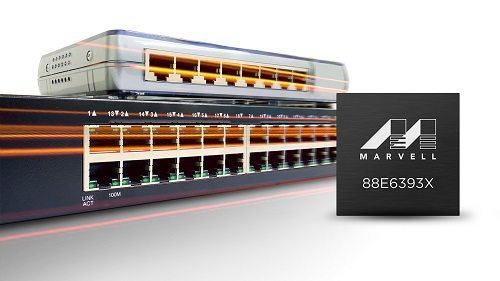 它符合崭新的时间敏感网络 (TSN) 协议(例如 802.1AS、802.1Qat、802.1Qav 和 802.1Qbv),实现工业网络环境下的低延迟运行。 256 输入三元内容可寻址存储器 (TCAM) 实现实时监控、深层数据包检测 (DPI),并能监控网络中传输的数据内容(具有参考性访问控制和策略控制表)。 拒绝服务 (DoS) 预防机制能够检测到非法数据包,减轻 DoS 攻击造成的网络安全威胁。
它符合崭新的时间敏感网络 (TSN) 协议(例如 802.1AS、802.1Qat、802.1Qav 和 802.1Qbv),实现工业网络环境下的低延迟运行。 256 输入三元内容可寻址存储器 (TCAM) 实现实时监控、深层数据包检测 (DPI),并能监控网络中传输的数据内容(具有参考性访问控制和策略控制表)。 拒绝服务 (DoS) 预防机制能够检测到非法数据包,减轻 DoS 攻击造成的网络安全威胁。88E6393X 设备同高性能 ARMADA® 网络处理系统级芯片 (SoC) 相配合,可以分担一些数据包处理活动,从而使 CPU 带宽更好地专注于更高级别的活动。由于服务质量 (QoS) 可以跨越支持多达 8 种通信类型,数据完整性得以提高。另外,该交换机 IC 也将其提升为可扩展解决方案。10 Gbps 接口提供无阻塞的上行链路,使其可将数个单元级联在一起,从而创造出更多端口数量的交换机(16 个、24 个等)。
这款新产品的推出,集合占用空间小、功耗低、广泛安全和灵活度高等特点,可以为 SMB、企业、工业和 uCPE 空间提供一款高效的交换机 IC 解决方案。
-
April 02, 2018
理解当今的网络遥测需求
作者:Tal Mizrahi,Marvell 特征定义架构师
最近几年,网络实施的方式发生根本变化,随着数据需求的增长,类型更广泛的功能和运行性能水平的提高已经成为一种必要条件。 与之相伴的是另一种更大的需求,即针对该项性能标准的实时准确测量方式,以及深度分析,以便在任何潜在问题发展升级之前,查找并后续进行解决。
当今的数据网络发展速度不断加快且复杂性不断攀升,意味着对这类活动的监控进程难度越来越大。 结果导致只能强制执行更加繁琐且本质灵活的遥测机制,尤其是对于数据中心和企业网络。
当人们试图提取遥测资料时,发现有范围广大的多种不同选项,包括被动监控、主动测量和混合方法。 最普遍的一种做法是骑肩跟随遥测信息进入正在通过网络的数据包。 这种策略应用于原处 OAM (IOAM) 和带内网络遥测 (INT),以及替代进行的性能测量 (AM-PM) 背景之下。
Marvell 的方法是提供多样化且通用性高的工具组,可以通过它执行各种各样的遥测方法,而非局限于一种特定的测量协议。 欲了解此主题的更多信息,包括长久以来普遍所用的被动和主动测量协议,以及崭新的混合型遥测方法,请观看以下视频并下载 Marvell 白皮书。
-
January 11, 2018
全球数据的存储
By Marvell PR Team
在当下以数据为中心的世界,数据存储是发展的基石,但未来的数据将如何存储却是一个广泛争论的问题。 显而易见,数据增长仍将保持大幅上升态势。 IDC 公司编写的一份题为“数据时代 2025”的报告指出,全世界生成的数据量将以接近指数级的速度增长。 到 2025 年,数据量预期将会超过 163 Zb(几乎是当今数据量的 8 倍,接近 2010 年数据量的 100 倍)。 随着云服务的使用量增加、物联网 (IoT) 节点的广泛部署,虚拟现实和增强现实应用、自动驾驶汽车、机器学习和“大数据”的盛行,都将在未来新的数据驱动时代发挥重要作用。
展望未来,智能城市的建设需要部署非常精密的基础设施,以达到减少交通拥堵、提高公共设施效率、优化环境等等种类繁杂的目的,从而导致数据量进一步攀升。 未来的很大一部分数据需要满足实时访问。 这种需求将对我们采用的技术产生影响,也会影响数据在网络中的存储位置。 另外,还必须考虑到一些重要的安全因素。
因此,为了能够控制开销,尽可能提高运营效率,数据中心和商业企业将尝试采用分层存储方法,使用非常合适的存储介质,以降低相关成本。 存储介质的选择将依据数据访问的频率及可接受的延迟程度而定。 This will require the use of numerous different technologies to make it fully economically viable - with cost and performance being important factors.
当前市面上有众多不同的存储介质。 有些存储介质已经非常成熟,有些则仍然处于新兴阶段。 在某些应用中,硬盘驱动器 (HDD) 正在被固态硬盘 (SSD) 取代,而在 SSD 领域,随着技术从 SATA 向 NVMe 的迁移,NVMe 正在促使 SSD 技术充分发挥自身性能潜力。 HDD 的容量持续大幅提高,整体性价比的提升也增加了设备的吸引力。 云计算保证了庞大的数据存储需求,这意味着 HDD 在这个领域具有强劲的发展动力。
未来将出现其他形式的存储器,它们将帮助我们应对日益增长的存储需求所带来的挑战。 其中包括更高容量的 3D 堆栈闪存,也包括全新的技术,例如相变存储器,它的写入速度很快,使用寿命也更长。 随着基于光纤的 NVMe (NVMf) 接口的问世,高带宽、超低延迟、非常高的可扩展性的 SSD 数据存储迎来了广阔的前景。
Marvell 很早就认识到数据存储的重要性将日益提高,并一直将这个领域作为发展重点,成为了业内 HDD 控制器和消费级固态硬盘控制器排名靠前的供应商。
在产品发布之后仅 18 个月,采用 NANDEdge™ 纠错技术的 Marvell 88SS1074 SATA SSD 控制器的出货量就突破了 5000 万件。 凭借屡获殊荣的 88NV11xx 系列小尺寸 DRAM-less SSD 控制器(基于 28nm CMOS 半导体工艺),Marvell 为市场提供了优化的高性能 NVMe 存储控制器解决方案,可在紧凑型简化手持式计算设备上采用,例如平板电脑和超级本。 这些控制器能够支持 1600Mb/s 的读取速度,而且功耗非常低,有利于节省电池电量。 Marvell 提供 88SS1092 NVMe SSD 控制器等解决方案,针对新计算模式设计,让数据中心能够共享存储数据,从而非常大程度地降低成本和提高性能效率。
数据超乎想象的增长意味着需要更多的存储。 新兴应用和创新技术将促使我们采用全新方式来提高存储容量、缩短延迟和确保安全性。 Marvell 为行业提供一系列技术以满足数据存储需求,可以满足 SSD 或 HDD 实施要求,且配备所有配套接口类型,从 SAS 和 SATA 一直到 PCIe 和 NMVe。
 欲了解有关 Marvell 产品如何存储全球数据的更多信息,请访问 www.marvell.com。
欲了解有关 Marvell 产品如何存储全球数据的更多信息,请访问 www.marvell.com。 -
November 06, 2017
USR联盟:促成一个开放的多芯片模块 (MCM) 生态系统
By Gidi Navon, Senior Principal Architect, Marvell
 为了适应不断提高的带宽需求、设计的复杂性、新工艺的出现以及多学科技术的整合等要求,半导体行业正在经历指数性增长和更加快速的变化。 所有这些又都是在越来越短的开发周期和越来越激烈的竞争背景下发生的。 在软件和硬件等技术驱动的其他产业领域,正在通过建立一系列开放的联盟和开放的标准来解决类似的挑战。 This blog does not attempt to list all the open alliances that now exist -- the Open Compute Project, Open Data Path and the Linux Foundation are just a few of the most prominent examples. 但目前还有一个技术领域没有采纳这种开放式的合作,这就是多芯片模块 (MCM),它是将多个半导体晶片封装在一起,从而在一个单一封装中能够创建一个完整的系统。
为了适应不断提高的带宽需求、设计的复杂性、新工艺的出现以及多学科技术的整合等要求,半导体行业正在经历指数性增长和更加快速的变化。 所有这些又都是在越来越短的开发周期和越来越激烈的竞争背景下发生的。 在软件和硬件等技术驱动的其他产业领域,正在通过建立一系列开放的联盟和开放的标准来解决类似的挑战。 This blog does not attempt to list all the open alliances that now exist -- the Open Compute Project, Open Data Path and the Linux Foundation are just a few of the most prominent examples. 但目前还有一个技术领域没有采纳这种开放式的合作,这就是多芯片模块 (MCM),它是将多个半导体晶片封装在一起,从而在一个单一封装中能够创建一个完整的系统。MCM的概念已经在业界存在了一段时间,这种方式具有多种技术和市场方面的优势,其中包括:
- Improved yield - Instead of creating large monolithic dies with low yield and higher cost (which sometimes cannot even be fabricated), splitting the silicon into multiple die can significantly improve the yield of each building block and the combined solution. 更高的良率最终转化为成本的降低。
- Optimized process - The final MCM product is a mix-and-match of units in different fabrication processes which enables optimizing of the process selection for specific IP blocks with similar characteristics.
- Multiple fabrication plants - Different fabs, each with its own unique capabilities, can be utilized to create a given product.
- Product variety - New products are easily created by combining different numbers and types of devices to form innovative and cost‑optimized MCMs.
- Short product cycle time - Dies can be upgraded independently, which promotes ease in the addition of new product capabilities and/or the ability to correct any issues within a given die. 例如,可以给新产品集成全新的 I/O 接口,而无需重新设计解决方案中那些稳定运行且不需改变的部分,从而避免浪费时间和金钱。
- Economy of scale - Each die can be reused in multiple applications and products, increasing its volume and yield as well as the overall return on the initial investment made in its development.
Sub-dividing large semiconductor devices and mounting them on an MCM has now become the new printed circuit board (PCB) - providing smaller footprint, lower power, higher performance and expanded functionality.
现在,我们可以想象一下,上面列出的优势并不局限于某家芯片供应商,而是可以由整个行业共享。 通过开放和标准化晶片之间的接口,就能引入一个真正的开放平台,而在此平台下,来自不同公司且具有各自技术专长的设计团队,可以创造出任何单打独斗的公司所不能及的各种新产品。
这正是 USR 联盟所要倡导实施的所在。 USR 联盟已经定义了超短距离 (USR) 链路,针对单一封装中所含组件之间的非常短距离通信进行了优化。 现有的跨越封装边界和连接器的超短距离 (VSR) PHY 需要面对一些不属于封装内部的技术挑战,而 USR 链路则可以提供更高的带宽,更低的功耗和更小的芯片尺寸。 此外,USR PHY 是基于多线差分信号传输技术,专门针对 MCM 环境进行了优化。
有很多应用都可以通过 USR 链路实施, 例如 CPU、交换机和路由器、FPGA、DSP、模拟组件和各种长距离电光接口等等。
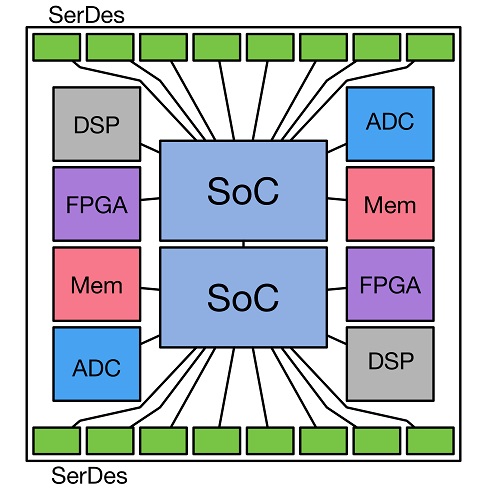 图 1: 可能的 MCM 布局范例
图 1: 可能的 MCM 布局范例 作为 USR 联盟的一个积极推动者,Marvell 公司正在努力建造一个关于互操作组件、互连、协议和软件的生态系统,以帮助半导体产业为市场带来更多价值。 USR 联盟正在与业界和其他标准开发组织合作,共同创建 PHY、MAC 和软件标准以及互操作性协议,同时为了确保广泛的互操作性,也在推动开发关于 USR 应用(包括认证计划)的完整生态系统。
欲了解关于 USR 联盟的详细信息,请访问: www.usr-alliance.org
-
October 19, 2017
Wi-Fi 20 周年庆 - 第 3 篇
作者:Prabhu Loganathan,Marvell 互联事业部市场营销高级总监
1997 年实现标准化的 Wi-Fi 改变了我们使用计算技术的方式。 Today, almost every one of us uses a Wi-Fi connection on a daily basis, whether it's for watching a show on a tablet at home, using our laptops at work, or even transferring photos from a camera. 每周都会有数百万支持 Wi-Fi 的产品发货,而且似乎这种技术还在持续拓展新的设备种类。
Wi-Fi 低调问世以来,发展迅猛。 While the initial standard allowed for just 2 Mbit/s data rates, today's Wi-Fi implementations allow for speeds in the order of Gigabits to be supported. 我们介绍 Wi-Fi 历史的博客系列由三部分组成,这是最后一篇,将讨论无线标准的未来趋势。
Gigabit Wireless
The latest 802.11 wireless technology to be adopted at scale is 802.11ac. 它扩展了 802.11n 标准,具体来说是在 5.8 GHz 频段实现了改进,而 802.11n 技术用于 2.4 GHz 频段,以确保向后兼容性。由于采用 5.8 GHz 频段,802.11ac 能够获得宽大的 160 Hz 通道带宽,这在已经拥挤的 2.4 GHz 频段中是无法实现的。 此外,波束成形技术和多达 8 路 MIMO 数据流也提高了可支持的速度。 根据配置的不同,数据速率最小为 433 Mbit/s,若路由器和最终用户设备都拥有多个天线,非常大可达数千兆。
If that's not fast enough, the even more cutting edge 802.11ad standard (which is now starting to appear on the market) uses 60 GHz ‘millimeter wave’ frequencies to achieve data rates up to 7 Gbit/s, even without MIMO propagation. 该技术的主要缺点是,在 60 GHz 频率下,无线范围和穿透能力大大降低。
Looking Ahead
Now that we've achieved Gigabit speeds, what's next? 除了高速之外,IEEE 802.11 工作组也认识到,低速、高能效的通信实际上也是极具发展潜力的领域。 虽然 Wi-Fi 一直以来都是一种相对功耗较高的标准,但即将问世的协议将具备相关属性,让物联网 (IoT) 市场等目标领域能够以更加节能的方式进行通讯。20 Years and Counting
Although it has been around for two whole decades as a standard, Wi-Fi has managed to constantly evolve and keep up with the times. 从拨号时代到宽带普及,再到智能手机,现在我们进入了物联网的早期阶段,Wi-Fi 一直在开发新技术,以适应市场的需求。 如果历史可以给予我们启示,那么似乎可以肯定,Wi-Fi 将在未来的很多年里伴随着我们。 -
October 11, 2017
通过支持 ESPRESSObin 和 MACCHIATObin 社区平台上的 Google Cloud IoT Core Public Beta,将 IoT 技术扩展到企业边缘
By Aviad Enav Zagha, Sr. Director Embedded Processors Product Line Manager, Networking Group, Marvell
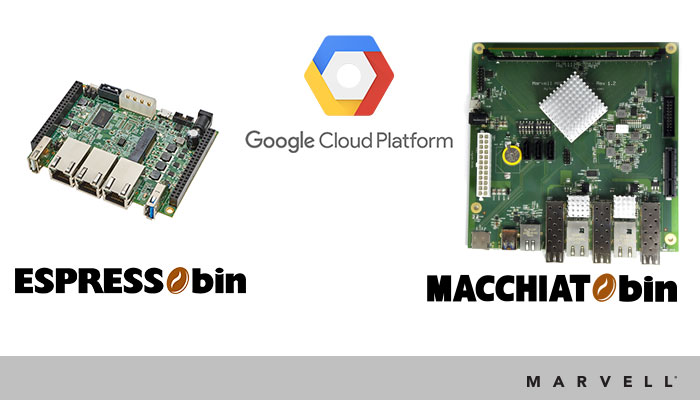 Though the projections made by market analysts still differ to a considerable degree, there is little doubt about the huge future potential that implementation of Internet of Things (IoT) technology has within an enterprise context. It is destined to lead to billions of connected devices being in operation, all sending captured data back to the cloud, from which analysis can be undertaken or actions initiated.
Though the projections made by market analysts still differ to a considerable degree, there is little doubt about the huge future potential that implementation of Internet of Things (IoT) technology has within an enterprise context. It is destined to lead to billions of connected devices being in operation, all sending captured data back to the cloud, from which analysis can be undertaken or actions initiated. In order to put the least possible strain on cloud-based resources, we believe the best approach is to divest some intelligence outside the core and place it at the enterprise edge, rather than following a purely centralized model. This arrangement places computing functionality much nearer to where the data is being acquired and makes a response to it considerably easier. IoT devices will then have a local edge hub that can reduce the overhead of real-time communication over the network. Rather than relying on cloud servers far away from the connected devices to take care of the ‘heavy lifting’, these activities can be done closer to home.
In order to accelerate the widespread propagation of IoT technology within the enterprise environment, Marvell now supports the multifaceted Google Cloud IoT Core platform. Cloud IoT Core is a fully managed service mechanism through which the management and secure connection of devices can be accomplished on the large scales that will be characteristic of most IoT deployments.
Through its IoT enterprise edge gateway technology, Marvell is able to provide the necessary networking and compute capabilities required (as well as the prospect of localized storage) to act as mediator between the connected devices within the network and the related cloud functions. By providing the control element needed, as well as collecting real-time data from IoT devices, the IoT enterprise gateway technology serves as a key consolidation point for interfacing with the cloud and also has the ability to temporarily control managed devices if an event occurs that makes cloud services unavailable. In addition, the IoT enterprise gateway can perform the role of a proxy manager for lightweight, rudimentary IoT devices that (in order to keep power consumption and unit cost down) may not possess any intelligence. Through the introduction of advanced ARM®-based community platforms, Marvell is able to facilitate enterprise implementations using Cloud IoT Core. The recently announced Marvell MACCHIATObin™ and Marvell ESPRESSObin™ community boards support open source applications, local storage and networking facilities. At the heart of each of these boards is Marvell’s high performance ARMADA® system-on-chip (SoC) that supports Google Cloud IoT Core Public Beta.
Consequently, mediation between IoT devices and the cloud will be needed, as will cost-effective processing and management.
Please visit MACCHIATObin Wiki and ESPRESSObin Wiki for instructions on how to connect to Google’s Cloud IoT Core Public Beta platform.
-
August 31, 2017
利用硬件加密保护嵌入式存储
作者:Jeroen Dorgelo,Marvell 存储事业部战略总监
对于工业、军事和大量现代商业应用,数据安全性自然显得尤为重要。 虽然基于软件的加密对于消费者和企业环境而言通常运行良好,但工业和军事应用所使用的嵌入式系统背景,则通常需要一种结构更简单而本质性能更加强劲的软件。
自我加密硬盘采用板上加密处理器在硬盘层确保数据的安全。 这样不仅能自动提高硬盘安全性,而且过程对用户和主机操作系统透明。 这种设备通过在后台自动加密数据,来提供嵌入式系统所要求的使用简洁性和弹性数据安全。
嵌入式与企业数据安全
嵌入式和企业存储通常都要求很强的数据安全性。 根据相关行业领域的不同,通常会涉及到客户(或可能是患者)隐私、军事数据或商业数据的安全。 数据种类不同,共性也越来越少。 嵌入式存储与企业存储的使用方式有很大的差别,因而导致解决数据安全问题的方法也大相径庭。
企业存储通常由数据中心多层机架内互相连通的磁盘阵列组成,而嵌入式存储一般只是简单的将一块固态硬盘 (SSD) 安装到嵌入式电脑或设备之中。 企业经常会控制数据中心的物理安全,也会执行企业网络(或应用程序)的软件访问控制。 Embedded devices, on the other hand - such as tablets, industrial computers, smartphones, or medical devices - are often used in the field, in what are comparatively unsecure environments. 这种背景下的数据安全没有其他选择,只能在设备层面进行。
基于硬件的全盘加密
嵌入式应用的访问控制非常没有保障,这里的数据安全工作越自动化越透明越好。
全盘、基于硬件的加密已经证实是达到这个目的最佳方法。全盘加密 (FDE) 通过自动对硬盘所有内容进行加密的方式,达到更高程度的安全性和透明度。 基于文件的加密会要求用户选择要加密的文件或文件夹,且需要提供解密的密码或秘钥,与之相对,FDE 的工作则充分透明。 所有写入硬盘的数据都会被加密,不过一旦经过验证,用户对此硬盘的访问就如同未加密硬盘一样简单。 这不仅会让 FDE 更易于使用,也意味着这是一种更可靠的加密方法,因为所有的数据都会自动加以保护。 即使用户忘记加密或没有访问权限的文件(如隐藏的文件、临时文件和交换空间)也都会自动加以保护。
虽然 FDE 也可以通过软件技术实现,但基于硬件的 FDE 性能更好,且固有的保护特性更强。 基于硬件的 FDE 是在硬盘层以自我加密 SSD 的方式进行。SSD 控制器内含一个硬件加密引擎,也是在硬盘自身之内存储私有秘钥。
Because software based FDE relies on the host processor to perform encryption, it is usually slower - whereas hardware based FDE has much lower overhead as it can take advantage of the drive’s integrated crypto-processor. 基于硬盘的 FDE 还可以加密硬盘的主引导记录,与之相反,基于软件的加密却不具备这种功能。
以硬件为中心的 FDE 不仅对用户透明,对主机操作系统亦然。 他们在后台悄无声息的工作,而且运行无需任何特殊软件。 除有助于优化操作简便性之外,这也意味着敏感的加密秘钥会独立于主机操作系统和存储器进行保存,所有的私有秘钥全部存储于硬盘本身。
提高数据安全性
这款基于硬件的 FDE 不仅能够提供当今市场急需的透明且便于使用的加密过程,而且具备现代 SSD 特有的数据安全优势。 NAND 单元的使用寿命有限,而现代 SSD 采用先进的损耗均衡算法,来尽可能的延长使用寿命。 写入操作并不会在数据更新时覆盖原有的 NAND 单元,而是在文件更新时在硬盘中来回移动,通常的结果是同一条数据存在多个副本,分散存储于 SSD 之中。 这种损耗均衡技术非常有效,但是也让基于文件的加密和数据擦除变得更加困难,因为现在有多个数据副本需要加密或擦除。
FDE 为 SSD 解决了加密和擦除两方面的问题。 由于所有的数据都加密,所以无需担心是否存在未加密数据残留。 另外,因为所使用的加密方式(一般为 256 位 AES)非常安全,擦除硬盘就同擦除私有秘钥一样便于操作。
解决嵌入式数据安全问题
嵌入式设备通常都会成为 IT 部门的一大安全挑战,因为这些设备经常在非受控环境下使用,还有可能被未授权人员使用。 虽然企业 IT 有权限执行企业范围内的数据安全政策和访问控制,但是在工业环境或现场环境中针对嵌入式设备使用这种方法却难上加难。
针对嵌入式应用中数据安全的简易解决方案正是基于硬件的 FDE。 自我加密硬盘带有硬盘加密处理器,其处理开销非常低而且在后台运行,对用户和主机操作系统透明。 其便于使用的特性也有助于提高安全性,因为管理员不需要依靠用户执行安全政策,而且私有秘钥不会暴露给软件或操作系统。
-
July 17, 2017
合理精简以太网
作者:Marvell 公司资深架构师 George Hervey
Implementation of cloud infrastructure is occurring at a phenomenal rate, outpacing Moore's Law.
More and more switches are required, thereby increasing capital costs, as well as management complexity. To tackle the rising expense issues, network disaggregation has become an increasingly popular approach. By separating the switch hardware from the software that runs on it, vendor lock-in is reduced or even eliminated.
The number of managed switches basically stays the same.
Network Disaggregation
Almost every application we use today, whether at home or in the work environment, connects to the cloud in some way. Our email providers, mobile apps, company websites, virtualized desktops and servers, all run on servers in the cloud.
As demand increases, Moore's law has struggled to keep up. Scaling data centers today involves scaling out - buying more compute and storage capacity, and subsequently investing in the networking to connect it all.
Buying a switch, router or firewall from one vendor would require you to run their software on it as well. Larger cloud service providers saw an opportunity. These players often had no shortage of skilled software engineers.
802.1BR
Today's cloud data centers rely on a layered architecture, often in a fat-tree or leaf-spine structural arrangement. Rows of racks, each with top-of-rack (ToR) switches, are then connected to upstream switches on the network spine. The ToR switches are, in fact, performing simple aggregation of network traffic. Using relatively complex, energy consuming switches for this task results in a significant capital expense, as well as management costs and no shortage of headaches.
By replacing ToR switches with port extenders, port connectivity is extended directly from the rack to the upstream.
The Next Step in Network Disaggregation
Though many of the port extenders on the market today fulfill 802.1BR functionality, they do so using legacy components. Instead of being optimized for 802.1BR itself, they rely on traditional switches. This, as a consequence impacts upon the potential cost and power benefits that the new architecture offers.
Designed from the ground up for 802.1BR, Marvell's Passive Intelligent Port Extender (PIPE) offering is specifically optimized for this architecture. PIPE is interoperable with 802.1BR compliant upstream bridge switches from all the industry’s leading OEMs. It enables fan-less, cost efficient port extenders to be deployed, which thereby provide upfront savings as well as ongoing operational savings for cloud data centers.
802.1BR's port extender architecture is bringing about the second wave, where ports are decoupled from the switches which manage them.
-
June 21, 2017
更好地利用原有的基础设施
By Ron Cates
The flexibility offered by wireless networking is revolutionizing the enterprise space. High-speed Wi-Fi®, provided by standards such as IEEE 802.11ac and 802.11ax, makes it possible to deliver next-generation services and applications to users in the office, no matter where they are working. However, the higher wireless speeds involved are putting pressure on the cabling infrastructure that supports the Wi-Fi access points around an office environment. The 1 Gbit/s Ethernet was more than adequate for older wireless standards and applications. Now, with greater reliance on the new generation of Wi-Fi access points and their higher uplink rate speeds, the older infrastructure is starting to show strain. At the same time, in the server room itself, demand for high-speed storage and faster virtualized servers is placing pressure on the performance levels offered by the core Ethernet cabling that connects these systems together and to the wider enterprise infrastructure. One option is to upgrade to a 10 Gbit/s Ethernet infrastructure. But this is a migration that can be prohibitively expensive. The Cat 5e cabling that exists in many office and industrial environments is not designed to cope with such elevated speeds. To make use of 10 Gbit/s equipment, that old cabling needs to come out and be replaced by a new copper infrastructure based on Cat 6a standards. Cat 6a cabling can support 10 Gbit/s Ethernet at the full range of 100 meters, and you would be lucky to run 10 Gbit/s at half that distance over a Cat 5e cable. In contrast to data-center environments that are designed to cope easily with both server and networking infrastructure upgrades, enterprise cabling lying in ducts, in ceilings and below floors is hard to reach and swap out. This is especially true if you want to keep the business running while the switchover takes place. Help is at hand with the emergence of the IEEE 802.3bz™ and NBASE-T® set of standards and the transceiver technology that goes with them. 802.3bz and NBASE-T make it possible to transmit at speeds of 2.5 Gbit/s or 5 Gbit/s across conventional Cat 5e or Cat 6 at distances up to the full 100 meters. The transceiver technology leverages advances in digital signal processing (DSP) to make these higher speeds possible without demanding a change in the cabling infrastructure. The NBASE-T technology, a companion to the IEEE 802.3bz standard, incorporates novel features such as downshift, which responds dynamically to interference from other sources in the cable bundle. The result is lower speed. But the downshift technology has the advantage that it does not cut off communication unexpectedly, providing time to diagnose the problem interferer in the bundle and perhaps reroute it to sit alongside less sensitive cables that may carry lower-speed signals. This is where the new generation of high-density transceivers come in. There are now transceivers coming onto the market that support data rates all the way from legacy 10 Mbit/s Ethernet up to the full 5 Gbit/s of 802.3bz/NBASE-T - and will auto-negotiate the most appropriate data rate with the downstream device. This makes it easy for enterprise users to upgrade the routers and switches that support their core network without demanding upgrades to all the client devices. Further features, such as Virtual Cable Tester® functionality, makes it easier to diagnose faults in the cabling infrastructure without resorting to the use of specialized network instrumentation. Transceivers and PHYs designed for switches can now support eight 802.3bz/NBASE-T ports in one chip, thanks to the integration made possible by leading-edge processes. These transceivers are designed not only to be more cost-effective, they also consume far less power and PCB real estate than PHYs that were designed for 10 Gbit/s networks. This means they present a much more optimized solution with numerous benefits from a financial, thermal and a logistical perspective. The result is a networking standard that meshes well with the needs of modern enterprise networks - and lets that network and the equipment evolve at its own pace. -
2017 年 5 月 31 日
无线办公的重大推进
作者:Yaron Zimmerman,Marvell 公司高级职员产品线经理
现代企业办公环境正在逐步地向大量的无线连接方式转变,从而给员工提供更大的工作便利,以及实现更便捷的管理。 有了无线技术所提供的便利,办公人员将不再受限于哪里有电缆/端口,因而具有更高的可移动性。 It will mean that they can remain constantly connected and their work activities won’t be hindered - whether they are at their desk, in a meeting or even in the cafeteria. This will make enterprises much better aligned with our modern working culture - where hot desking and bring your own device (BYOD) are becoming increasingly commonplace.
这一趋势不断加速的主要原因是 802.11ac Wave 2 Wi-Fi 技术的出现。 由于这种技术可以实现千兆位数据速率(从而支持视频流媒体、更快的下载速度以及更高质量的视频会议等等),因而它具有很大的吸引力。 In addition, this protocol offers extended range and greater bandwidth through multi-user MIMO operation - so that a larger number of users can be supported simultaneously. 特定数量的用户需要的接入点更少,这对企业来说非常具有优势。
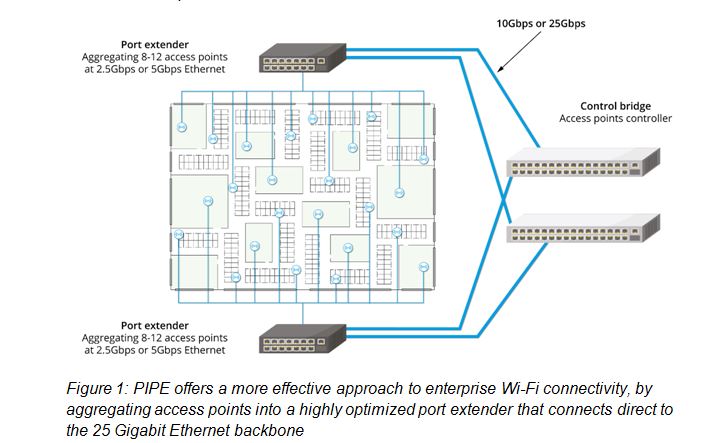
图1是一个针对企业/园区办公室平面图的例子,其中有大量的隔间,还有一些会议室。 虽然具体情况有所不同,但一般来说,企业/园区的占地面积可能在 20,000 至 45,000 平方英尺之间。 一个 802.11ac 接入点可以覆盖 3,000 到 4,000 平方英尺的面积,因而一个无线办公室需要总共约 8 到 12 个接入点才能充分覆盖。 如果是满足日常的语音和数据需求,这个密度应该可以接受, 而支持这些接入点的将是一个高容量的有线主干网络。
企业/园区主干网正在越来越多地采用基于 25 千兆以太网技术的基础设施,而不是传统的 10 千兆以太网。 在未来 2-3 年中,随着相关光学器件的价格变得更加实惠,预计 25 千兆以太网技术将会在新建办公楼得到更广泛地采用。 显然,企业希望利用 802.11ac 技术所提供的更高性能,但是他们在这样做时,也必须遵守严格的预算限制。 随着主干网数据容量的提高,其下层的分层网络结构由于包含各种中间交换机技术,其复杂性也会相应上升。 这些都是根据传统理论得出的结论。
在开始实施 25 千兆以太网技术/ 802.11ac 之前,企业必须充分认识到这种技术带来的问题。 除了刚刚提到的与硬件安装相关的初始投资,还必须考虑持续运营成本。 By aggregating the access points into a port extender that is then connecting directly to the 25 Gigabit Ethernet backbone instead towards a central control bridge switch, it is possible to significantly simplify the hierarchical structure - effectively eliminating a layer of unneeded complexity from the system.
Marvell 公司正在通过采用一种被动智能端口扩展 (PIPE) 的技术来实现上述目的。 这种产品是市场上特有的技术,目前可用的其他端口扩展器并不是为了这个目的而设计,因此在性能、价格和功率方面都没有进行优化。 PIPE is, in contrast, an optimized solution that is able to fully leverage the IEEE 802.1BR bridge port extension standard - dispensing with the need for expensive intermediary switches between the control bridge and the access point level and reducing the roll-out costs as a result. 由于不再将多个 802.11ac 接入点聚合到 10 千兆以太网交换机上,吞吐量因此可得到大幅提升。 同时因为需要管理的网络单元减少,持续运营成本也随之降低。
PIPE means that enterprises can future proof their office data communication infrastructure - starting with 10 Gigabit Ethernet, then upgrading to a 25 Gigabit Ethernet when it is needed. 它所包含的端口数量能够与企业/校园需要的接入点数量相匹配,以满足员工的无线连接需求。 它支持双归属 (dual homing) 功能,从而通过系统冗余来确保更高的服务可靠性和灵活性。 In addition, supporting Power-over-Ethernet (PoE), allows access points to connect to both a power supply and the data network through a single cable - further facilitating the deployment process.
-
April 27, 2017
11ac Wave 2 和 11ax 在 Wi-Fi 部署中的挑战: 如何经济高效地升级到 2.5GBASE-T 和 5GBASE-T
By Nick Ilyadis
IEEE has also noted that in the past two decades, the IEEE 802.11 wireless local area networks (WLANs) have also experienced tremendous growth with the proliferation of IEEE 802.11 devices, as a major Internet access for mobile computing. Therefore, the IEEE 802.11ax specification is under development as well. Giving equal time to Wikipedia, its definition of 802.11ax is: a type of WLAN designed to improve overall spectral efficiency in dense deployment scenarios, with a predicted top speed of around 10 Gbps. It works in 2.4GHz or 5GHz and in addition to MIMO and MU-MIMO, it introduces Orthogonal Frequency-Division Multiple Access (OFDMA) technique to improve spectral efficiency and also higher order 1024 Quadrature Amplitude Modulation (QAM) modulation support for better throughputs. Though the nominal data rate is just 37 percent higher compared to 802.11ac, the new amendment will allow a 4X increase of user throughput. This new specification is due to be publicly released in 2019.
Faster “Cats” Cat 5, 5e, 6, 6e and on
And yes, even cabling is moving up to keep up. Differences between CAT5, CAT5e, CAT6 and CAT6e Cables for specifics), but suffice it to say, each iteration is capable of moving more data faster, starting with the ubiquitous Cat 5 at 100Mbps at 100MHz over 100 meters of cabling to Cat 6e reaching 10,000 Mbps at 500MHz over 100 meters. Cat 7 can operate at 600MHz over 100 meters, with more “Cats” on the way. All of this of course, is to keep up with streaming, communications, mega data or anything else being thrown at the network.
How to Keep Up Cost-Effectively with 2.5BASE-T and 5BASE-T
This is where Marvell steps in with a whole solution. Marvell’s products, including the Avastar wireless products, Alaska PHYs and Prestera switches, provide an optimized solution that will help support up to 2.5 and 5.0 Gbps speeds, using existing cabling. For example, the Marvell Avastar 88W8997 wireless processor was the industry's first 28nm, 11ac (wave-2), 2x2 MU-MIMO combo with full support for Bluetooth 4.2, and future BT5.0. To address switching, Marvell created the Marvell® Prestera® DX family of packet processors, which enables secure, high-density and intelligent 10GbE/2.5GbE/1GbE switching solutions at the access/edge and aggregation layers of Campus, Industrial, Small Medium Business (SMB) and Service Provider networks. And finally, the Marvell Alaska family of Ethernet transceivers are PHY devices which feature the industry's lowest power, highest performance and smallest form factor.
These transceivers help optimize form factors, as well as multiple port and cable options, with efficient power consumption and simple plug-and-play functionality to offer the most advanced and complete PHY products to the broadband market to support 2.5G and 5G data rate over Cat5e and Cat6 cables.
You mean, I don’t have to leave the wiring closet?
# # #
-
January 13, 2017
Marvell 与 Mythware 强强联合,为中小学课堂引入专有“教室云”
By Yong Luo
(Mythware), cooperated to create a brand new wireless network interactive teaching tool –the Mythware Classroom Cloud. Compact and exquisitely designed, this wireless network teaching solution is the first brand new educational hardware product based on Mythware’s more than 10 years of experience in education informatization and multimedia audio and video technologies.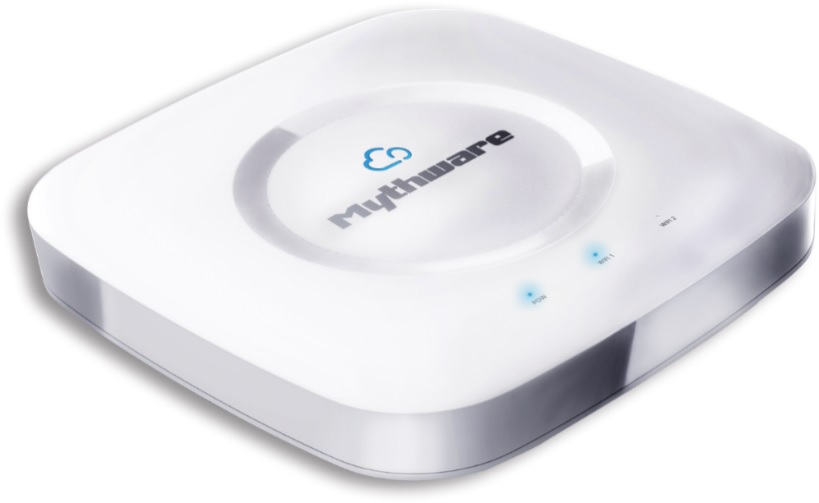 The introduction of the Mythware Classroom Cloud, as well as its supplementary interactive classroom software, effectively solves some common wireless network equipment-related teaching application challenges, such as instability, frequent dropping offline and data transmission errors. Thus, the innovative Interactive teaching can be successfully carried out wirelessly. This not only enhances the efficiency of teaching, but also brings new vigor and vitality into primary and secondary classrooms.
The introduction of the Mythware Classroom Cloud, as well as its supplementary interactive classroom software, effectively solves some common wireless network equipment-related teaching application challenges, such as instability, frequent dropping offline and data transmission errors. Thus, the innovative Interactive teaching can be successfully carried out wirelessly. This not only enhances the efficiency of teaching, but also brings new vigor and vitality into primary and secondary classrooms.
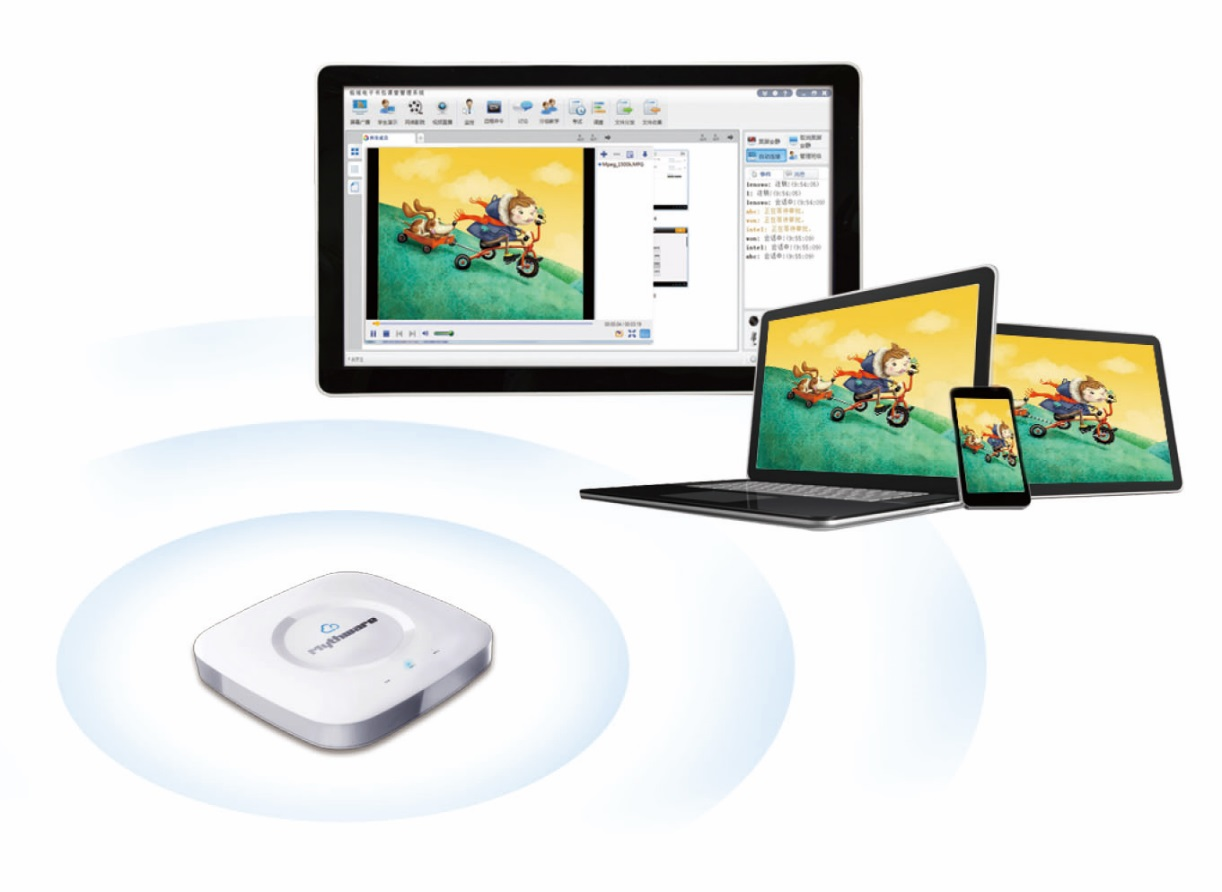 The Mythware Classroom Cloud incorporates a complete set of Marvell high-performance Wi-Fi enterprise-class wireless solutions, offering 2.4G and 5G operating frequency bands, and wireless throughput of up to 1900Mbit/s. The solution includes a dual-core 1.6GHz CPU – the ARMADA® 385. It also uses Marvell’s Avastar® 88W8864 – an 802.11ac 4X4 Wi-Fi chip. And, last but not least, the unit boasts a four-port Gigabit Ethernet transceiver, Marvell’s Alaska® 88E1543. Marvell's solutions have been widely used in the Cisco enterprise cloud and Linksys high-end routers.
The Marvell ARMADA 385 CPU chip, with super data processing and computing capability, is built into the Mythware Classroom Cloud. It provides strong protection for sending and receiving large-capacity cloud files in the classroom. The CPU also provides abundant interfaces, so you can connect hard drives directly through the SATA 3.0 interface, which helps the Mythware Classroom Cloud to support up to 8TB of storage.
This is especially important for schools with poor network conditions. Teachers can upload resources such as courseware to the Classroom Cloud’s hard drives before school time, and call on the resources directly in class. That enables students to enjoy multimedia teaching resources immediately and without interruption, effectively solving problems caused by inaccessible networks or limited network bandwidth. The Mythware Classroom Cloud enables full real-time interconnection between teacher's and student's end devices, sending and receiving documents, arranging homework and accessing teaching resources in real time, without needing them to be forwarded by campus servers.
The Mythware Classroom Cloud incorporates a complete set of Marvell high-performance Wi-Fi enterprise-class wireless solutions, offering 2.4G and 5G operating frequency bands, and wireless throughput of up to 1900Mbit/s. The solution includes a dual-core 1.6GHz CPU – the ARMADA® 385. It also uses Marvell’s Avastar® 88W8864 – an 802.11ac 4X4 Wi-Fi chip. And, last but not least, the unit boasts a four-port Gigabit Ethernet transceiver, Marvell’s Alaska® 88E1543. Marvell's solutions have been widely used in the Cisco enterprise cloud and Linksys high-end routers.
The Marvell ARMADA 385 CPU chip, with super data processing and computing capability, is built into the Mythware Classroom Cloud. It provides strong protection for sending and receiving large-capacity cloud files in the classroom. The CPU also provides abundant interfaces, so you can connect hard drives directly through the SATA 3.0 interface, which helps the Mythware Classroom Cloud to support up to 8TB of storage.
This is especially important for schools with poor network conditions. Teachers can upload resources such as courseware to the Classroom Cloud’s hard drives before school time, and call on the resources directly in class. That enables students to enjoy multimedia teaching resources immediately and without interruption, effectively solving problems caused by inaccessible networks or limited network bandwidth. The Mythware Classroom Cloud enables full real-time interconnection between teacher's and student's end devices, sending and receiving documents, arranging homework and accessing teaching resources in real time, without needing them to be forwarded by campus servers.
 One of the biggest highlights of the Mythware Classroom Cloud is that its lightweight body contains "wireless" super energy. Marvell’s Avastar 88W8864 802.11ac 4X4 wireless chip significantly improves the bandwidth utilization, as well as further upgrading data transmission capacity and reliability. It also provides trusted network support for a variety of multimedia file transmission in the wireless network teaching environment, ensuring the stability of classroom interactions.
One of its outstanding features is that teachers can use the wireless network in the classroom to send high-definition video (8Mbit/s) to more than 60+ mobile terminal devices with different operating systems, completely in sync and without delay. At the same time, teachers no longer have to worry about screen-pausing problems when broadcasting a PPT screen or demonstrating 3D graphic models.
And, when teachers use some interactive features (such as group teaching, sharing the whiteboard, initiating discussion and quick answer, survey and evaluations) during the teaching process, the problems of intermittent playback and the network dropping offline are solved.
One of the biggest highlights of the Mythware Classroom Cloud is that its lightweight body contains "wireless" super energy. Marvell’s Avastar 88W8864 802.11ac 4X4 wireless chip significantly improves the bandwidth utilization, as well as further upgrading data transmission capacity and reliability. It also provides trusted network support for a variety of multimedia file transmission in the wireless network teaching environment, ensuring the stability of classroom interactions.
One of its outstanding features is that teachers can use the wireless network in the classroom to send high-definition video (8Mbit/s) to more than 60+ mobile terminal devices with different operating systems, completely in sync and without delay. At the same time, teachers no longer have to worry about screen-pausing problems when broadcasting a PPT screen or demonstrating 3D graphic models.
And, when teachers use some interactive features (such as group teaching, sharing the whiteboard, initiating discussion and quick answer, survey and evaluations) during the teaching process, the problems of intermittent playback and the network dropping offline are solved.
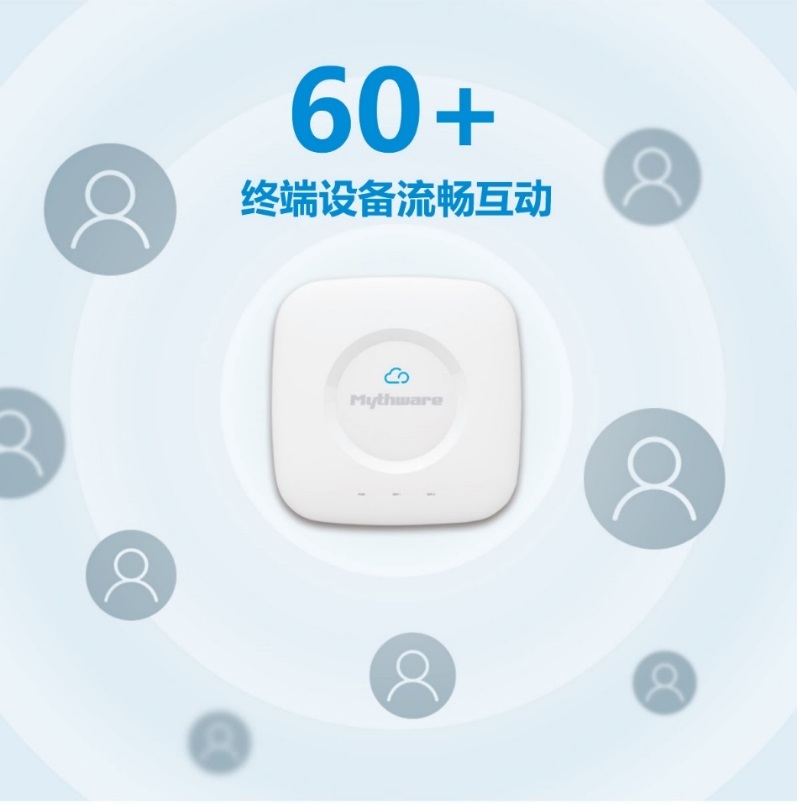 In addition, the Alaska 88E15433 Ethernet transceiver chip mounted in the Marvell solution provides stable and reliable Gigabit Ethernet connections, and Marvell’s 88PG877 power management chip provides voltage stability for the Mythware Classroom Cloud. It also supports flexible power supply modes: local AC and 802.3af PoE powering. With its special rotary chuck design, the Mythware Classroom Cloud equipment can be easily installed on classroom walls or ceilings.
In addition, the Alaska 88E15433 Ethernet transceiver chip mounted in the Marvell solution provides stable and reliable Gigabit Ethernet connections, and Marvell’s 88PG877 power management chip provides voltage stability for the Mythware Classroom Cloud. It also supports flexible power supply modes: local AC and 802.3af PoE powering. With its special rotary chuck design, the Mythware Classroom Cloud equipment can be easily installed on classroom walls or ceilings.
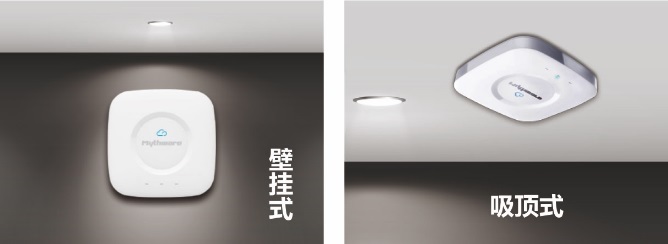 Mythware was founded in 2007, and for the past 10 years its main business has been educational software. Its core product – classroom interactive system software – enjoys a market share of up to 95% in China. It also supports up to 24 different languages, and is exported to over 60 countries and regions. Domestic and global users now exceed 31 million. By 2017, Mythware plans to fully transform into an integrated hardware and software supplier, focusing on intelligent hardware, big data, cloud platform, and will continue to release a large number of new hardware products and solutions.
Mythware was founded in 2007, and for the past 10 years its main business has been educational software. Its core product – classroom interactive system software – enjoys a market share of up to 95% in China. It also supports up to 24 different languages, and is exported to over 60 countries and regions. Domestic and global users now exceed 31 million. By 2017, Mythware plans to fully transform into an integrated hardware and software supplier, focusing on intelligent hardware, big data, cloud platform, and will continue to release a large number of new hardware products and solutions. -
January 09, 2017
以太网达尔文主义: 适者生存(唯快不破)
作者:Michael Zimmerman,Marvell CSIBU 副总裁兼总经理
The most notable metric of Ethernet technology is the raw speed of communications. With the introduction of 100BASE-T, the massive 10BASE-T installed base was replaced, showing a clear Darwinism effect of the fittest (fastest) displacing the prior and older generation. However, when 1000BASE-T (GbE – Gigabit Ethernet) was introduced, contrary to industry experts’ predictions, it did not fully displace 100BASE-T, and the two speeds have co-existed for a long time (more than 10 years). In fact, 100BASE-T is still being deployed in many applications. The introduction — and slow ramp — of 10GBASE-T has not impacted the growth of GbE, and it is only recently that GbE ports began consistently growing year over year. This trend signaled a new evolution paradigm of Ethernet: the new doesn’t replace the old, and the co-existence of multi variants is the general rule. The introduction of 40GbE and 25GbE augmented the wide diversity of Ethernet speeds, and although 25GbE was rumored to displace 40GbE, it is expected that 40GbE ports will still be deployed over the next 10 years1.
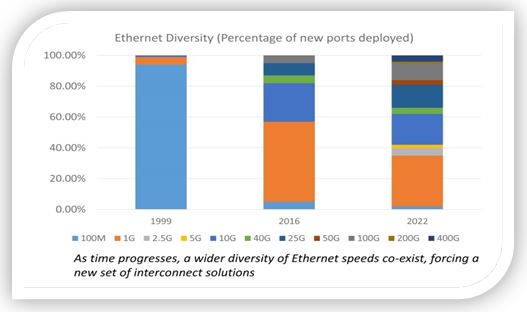 Hence, a new market reality evolved: there is less of a cannibalizing effect (i.e. newer speed cannibalizing the old), and more co-existence of multiple variants. This new diversity will require a set of solutions which allow effective support for multiple speed interconnect.
Hence, a new market reality evolved: there is less of a cannibalizing effect (i.e. newer speed cannibalizing the old), and more co-existence of multiple variants. This new diversity will require a set of solutions which allow effective support for multiple speed interconnect. 能够经济地缩小到几个端口2
Support of multiple Ethernet speeds
The first products in the family are the Prestera® 98DX83xx 320G interconnect switch, and the Alaska® 88X5113 25G/40G Gearbox PHY. The 98DX83xx switch fans-out up to 32-ports of 10GbE or 8-ports of 40GbE, in economical 24x20mm package, with power of less than 0.5Watt/10G port.
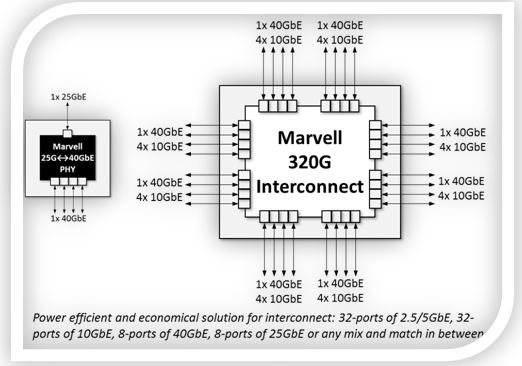 The 88X5113 Gearbox converts a single port of 40GbE to 25GbE. The combination of the two devices creates unique connectivity configurations for a myriad of Ethernet speeds, and most importantly enables scale down to a few ports. While data center- scale 25GbE switches have been widely available for 64-ports, 128-ports (and beyond), a new underserved market segment evolved for a lower port count of 25GbE and 40GbE. Marvell has addressed this space with the new interconnect solution, allowing customers to configure any number of ports to different speeds, while keeping the power envelope to sub-20Watt, and a fraction of the hardware/thermal footprint of comparable data center solutions. The optimal solution to serve low port count connectivity of 10GbE, 25GbE, and 40GbE is now well addressed by Marvell. Samples and development boards with SDK are ready, with the option of a complete package of application software.
The 88X5113 Gearbox converts a single port of 40GbE to 25GbE. The combination of the two devices creates unique connectivity configurations for a myriad of Ethernet speeds, and most importantly enables scale down to a few ports. While data center- scale 25GbE switches have been widely available for 64-ports, 128-ports (and beyond), a new underserved market segment evolved for a lower port count of 25GbE and 40GbE. Marvell has addressed this space with the new interconnect solution, allowing customers to configure any number of ports to different speeds, while keeping the power envelope to sub-20Watt, and a fraction of the hardware/thermal footprint of comparable data center solutions. The optimal solution to serve low port count connectivity of 10GbE, 25GbE, and 40GbE is now well addressed by Marvell. Samples and development boards with SDK are ready, with the option of a complete package of application software.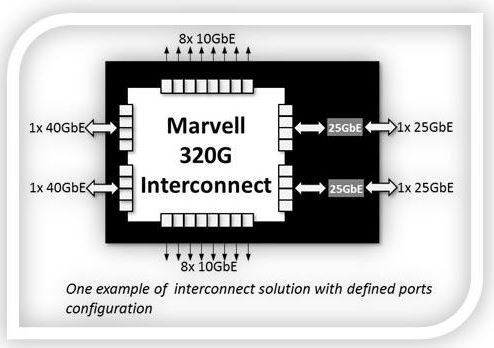
-
May 01, 2016
Marvell 通过 Linux 基金会项目支持企业级网络操作系统
By Yaniv Kopelman, Networking and Connectivity CTO, Marvell
White box switches are a “blank” standard hardware that relies on a network operating system, commonly Linux-based.
Built to run on Linux and open hardware, OpenSwitch is a full-featured network operating system (NOS) aimed at enabling the transition to disaggregated networks. OpenSwitch allows for freedom of innovation while maintaining stability and limiting vulnerability, and has a reliable architecture focused on modularity and availability.
This contribution to an industry standard NOS will enable Marvell devices to be widely used across different markets and boxes. To learn more, please visit: http://www.openswitch.net/, or read the full press release.
-
September 29, 2014
数据中心中的下一波闪存存储浪潮—会是客户端吗?
作者:Iri Trashanski,Marvell SSD 业务副总裁
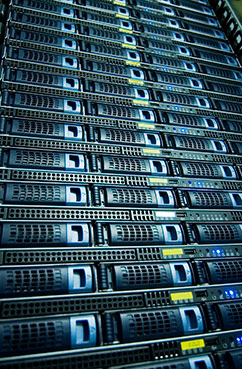 互联网一分钟内会发生什么? 根据 Intel 多项调查的结果,会发送超过六百万条 Facebook 消息,3470 万条即时信息,410 万条 Google 搜索查询,138,889 小时的 YouTube 视频观看,23,148 小时的 Netflix 视频观看,以及 133,000 多美元的 Amazon 销售。 事实上,2013 年所有产生数据的总和达到 4泽字节 (ZB)。 (1ZB = 1,0007 bytes.)
互联网一分钟内会发生什么? 根据 Intel 多项调查的结果,会发送超过六百万条 Facebook 消息,3470 万条即时信息,410 万条 Google 搜索查询,138,889 小时的 YouTube 视频观看,23,148 小时的 Netflix 视频观看,以及 133,000 多美元的 Amazon 销售。 事实上,2013 年所有产生数据的总和达到 4泽字节 (ZB)。 (1ZB = 1,0007 bytes.) 当今已有数百亿移动设备连接到互联网,随着物联网 (IoT) 成为现实,这一数据还将继续增加,导致数据存储需求的指数级增长。 In fact, according to IDC, data storage is predicted to increase 50-fold, from 0.8 ZB in 2009 to 44ZB by 2020.1 It is also predicted that 32 billion IoT devices will be connected by 2020, 40 percent of the data will be touched by the Cloud, and enterprises will have liability and responsibility for 85 percent of all data. 那么企业该如何跟上发展的步伐呢? Marvell 相信在未来的四年间,大部分非客户端 SSD 容量将用于超大规模公共和私有云部署。
超大规模计算是指分布式计算环境所需的设施和设置,以便高效从数台服务器扩展到数千台服务器。 超大规模应用更适合简单化的产品设计,需要成本非常低,将硬件投资水平控制在非常低,而将重点放在软件上。 换句话说,公司更愿意花费时间以节约成本,而不愿花费更多资金(在硬件、SW 和支持方面)来节省时间。 Marvell 相信,随着数据中心越来越多的运用更低成本的客户端 SSD 来承担负载,这种趋势还将在数据中心存储领域继续发展。 这个目标将通过高速 PCIe 接口实现。 事实上,有了适当的高性能 PCIe 基于客户端的 SSD,Marvell 相信到 2018 年,出售给数据中心的 SSD 中,超过一半会是 PCIe 。
超大规模的模式会与当前企业有所不同。 超大规模将更加注重以软件为中心的成长、超大容量增长、CapEx 和 OpEx 效率和互动应用程序支持。 SATA SSD 在数据中心领域获得成功,原因在于该产品非常具有性价比,而且使用经客户端验证的 IP。 该产品在存储基础设施中还非常易于安装。 但是 SATA 接口已经充分饱和,甚至在客户端应用中也是如此。 PCIe SSD 提供 6 倍带宽、4 倍 IOP 且延迟率优化 8 倍。 在此基础上,NVM Express (NVMe) 还具有极低命令和驱动器消耗的优势。 NVMe 还能够让解决方案将 NAND 存储连接到服务器,而无需协议转换。
另外,超大规模将需要 NAND(例如三阶 (TLC) NAND)成本持续降低,而这种储存技术需要高级纠错技术,比如低密度奇偶校验 (LDPC)。 所以压缩 SSD 的成本就需要某种类型的 PCIe SSD 控制器。 Marvell 最近宣布推出下一代高性能 PCIe 3.0 NVMe SSD 控制器 Marvell® 88SS1093,以优化的闪存架构和性能推进数据中心和客户端固态存储的发展,并将有助于再次推动数据中心的价格/性能曲线的优化,并支持数据中心朝客户端 SSD 的方向演进。
Marvell 88SS1093 SSD 控制器支持多达四条 PCIe 3.1 通道,根据主机系统定制,非常适合整个 4GB/s 或 2GB/s 终端。 为了充分利用高速 PCIe 连接,Marvell 开创性的 NVMe 设计通过大量采用硬件自动化,无需妥协即可增强 PCIe 链路的数据传送。 高效的数据流管理消除了旧版主机的控制瓶颈,最终达到周全的闪存性能。
Marvell 88SS1093 还集成 Marvell 的第三代 NANDEdge™ 纠错 LDPC 技术,以实现更可靠和更持久的强劲性能,可以支持 15nm TLC 和 3D NAND,成就低成本 SSD 的实现。
这类 SSD 技术方面的进步支撑未来数据中心方面的趋势发展,使其更加依赖于分布式、高效、可靠、可扩展的经济型架构。 硬件将更加取决于所选商品,使用客户端 SSD 和开放资源软件。 所以当我们展望数据中心闪存的下一波发展热潮,Marvell 相信那将是客户端和我们今天所讨论的技术。
# # #
1 From EMC-sponsored report, “The Digital Universe of Opportunities: 丰富数据和物联网价值的不断增加”,附带 IDC 研究和分析。
最近推文
- HashiCorp and Marvell: Teaming Up for Multi-Cloud Security Management
- Cryptomathic and Marvell: Enhancing Crypto Agility for the Cloud
- The Big, Hidden Problem with Encryption and How to Solve It
- Self-Destructing Encryption Keys and Static and Dynamic Entropy in One Chip
- Dual Use IP: Shortening Government Development Cycles from Two Years to Six Months

